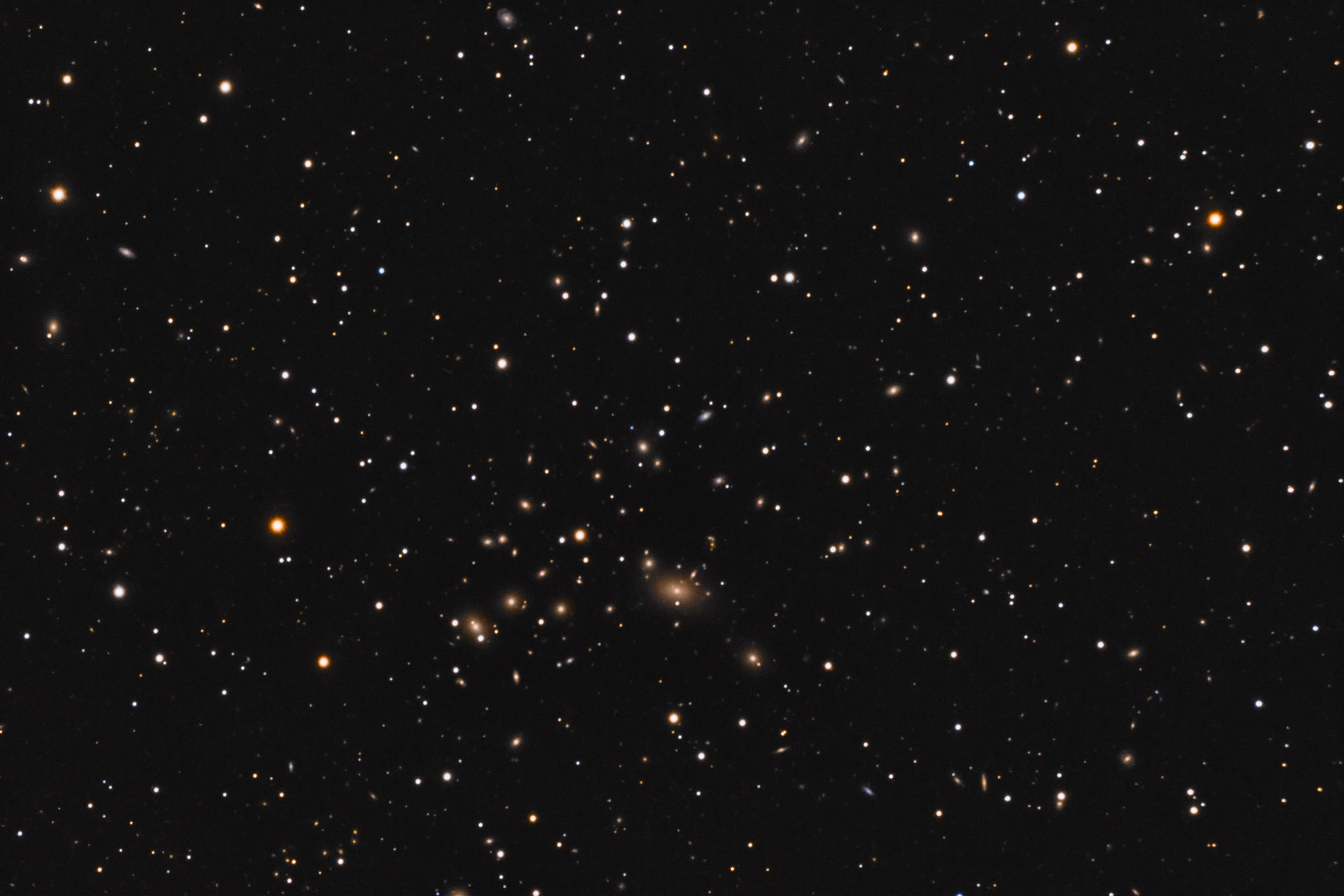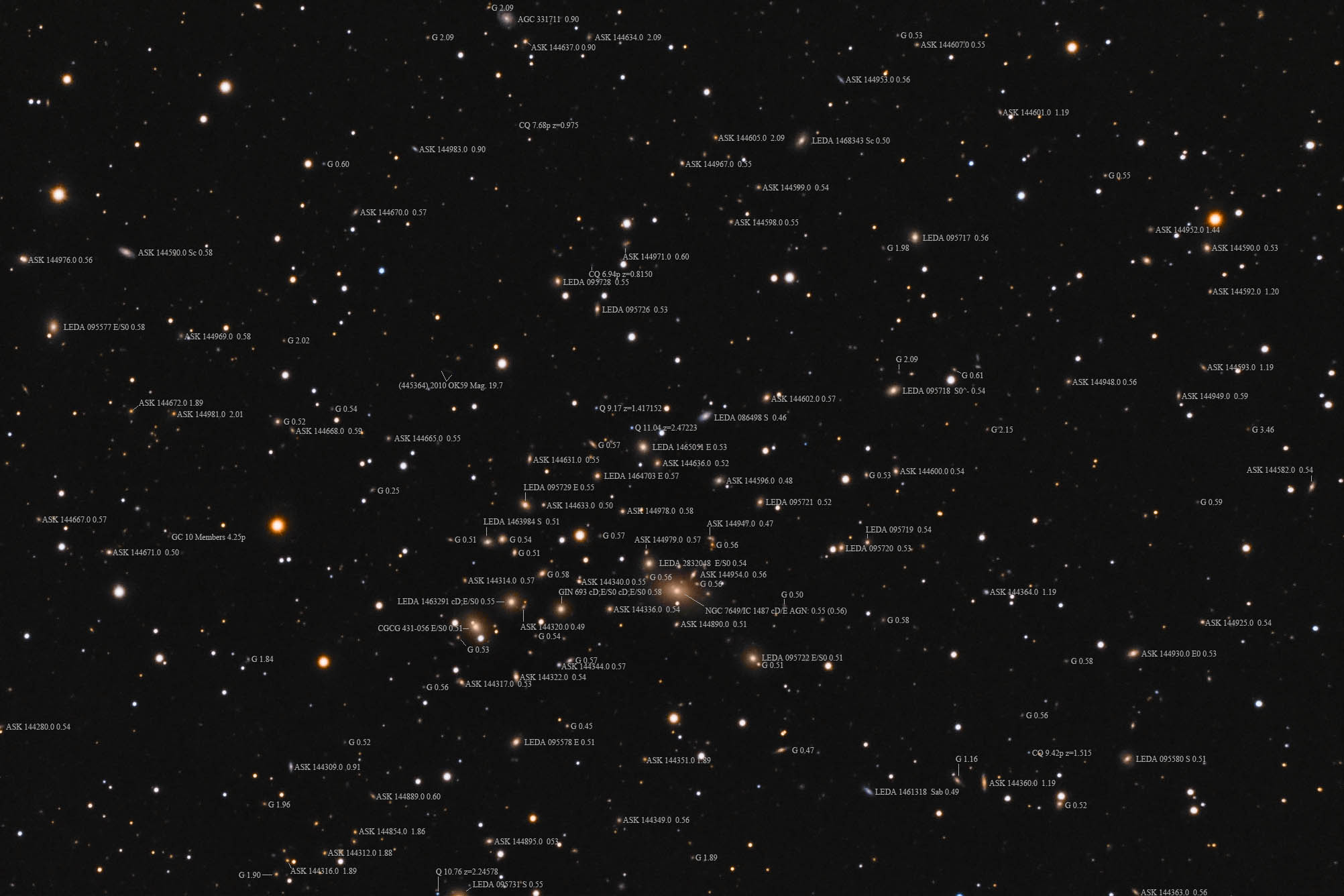| Description | Images |
Object name: NGC7649Designation(s): NGC7649, ABELL2593N, Abell 2593-N is the northern part of the much larger Abell 2593 cluster. Oddly the center of the full cluster is NGC 7649 which is also close to the center of Abell 2593-N. Abell 2593-S is rather sparse and south of this frame. The cluster is a bit over a half billion light-years distant in Pegasus just south of the Great Square. While the cluster is larger than my field I show over 125 members in this frame. Oddly this is the number listed in NED for the entire cluster. Apparently, they are being conservative There also appears to be a group at about 900 million light-years as well as another just over 2 billion light-years distant. Some of the latter are larger and brighter than many members of Abell 2593 even though 4 times more distant. One asteroid stuck its nose into the frame. It may be rather hard to find among all the galaxies. Related Designation(s):1RXS J232429.4+14:[MHE2006] a , 2MASS J23242008+1438496, 2MASX J23242006+1438492, 2MASXi J2324201+143849, ABELL 2593-N:[CBW93] A, ABELL 2593:[AAV2011] BCG, ABELL 2593:[B90], ABELL 2593:[BS90] 01, ABELL 2593:[CAE99], ABELL 2593:[PL95] BCG, ABELL 2593:[QIF2000] g1, ABELL 2593:[SPS89] 04i, ABELL 2593:[TCC97] 001, ABELL2593N, CAN 080 NED01, CGCG 2321.8+1422, CGCG 431-054, GIN 691, IC 1487, MCG +02-59-035, Mr18:[BFW2006] 02748 NED61, Mr19:[BFW2006] 05585 NED21, NGC 7649, NGC7649, NSA 151411, NVSS J232419+143853, PGC 071343, SDSS J232420.08+143849.6, UGC 12579, WINGS J232420.08+143849.8, WINGS J232420.09+143849.8, [BFH91] 2321+1422, [BFW2006] J351.08368+14.64712 , [HMS56] 2322+1425 08, |

